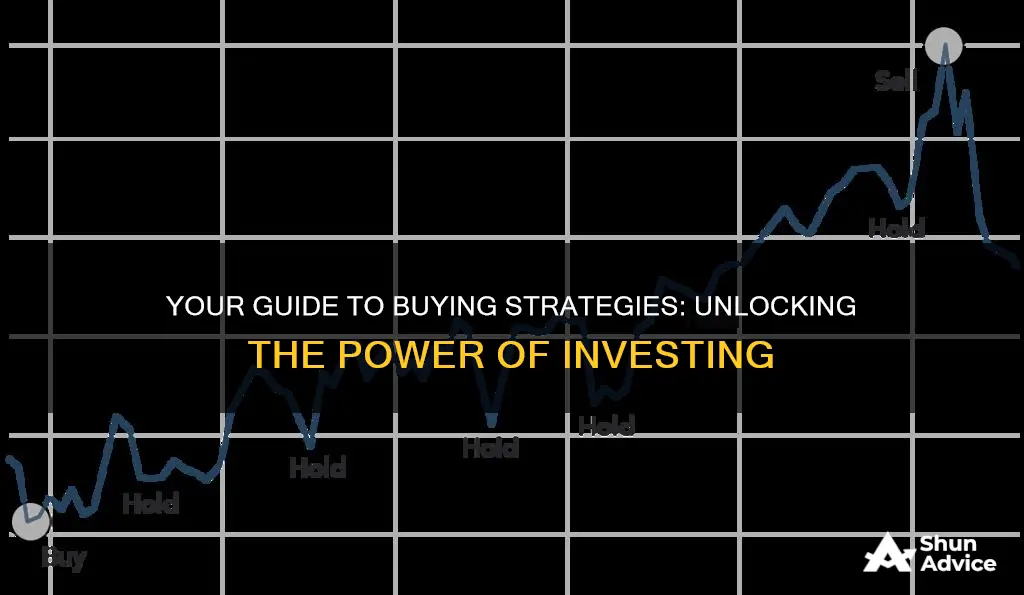
There are many different investment strategies, and the best one for you depends on your financial goals, risk tolerance, and time horizon. Here are some of the most common investment strategies mentioned on Reddit:
- Buy and Hold: This strategy involves buying stocks or other assets and holding them for a long period, typically several years or decades. This strategy is based on the assumption that the market will generally increase over time, and by holding onto investments, investors can avoid the risk of trying to time the market.
- Dollar-Cost Averaging: This strategy involves investing a fixed amount of money in the market at regular intervals, regardless of the market conditions. This helps to reduce the risk of investing a large sum of money right before a market downturn.
- Value Investing: This strategy focuses on buying stocks that appear to be undervalued based on fundamental analysis, such as low price-to-earnings (P/E) ratios, low price-to-book (P/B) ratios, or high dividend yields. The goal is to find stocks that are trading below their intrinsic value and have the potential for capital appreciation.
- Dividend Investing: This strategy involves investing in stocks that pay regular dividends, which can provide a source of income or can be reinvested to increase the number of shares owned. Dividend investing is often associated with a long-term buy-and-hold strategy.
- Index Investing: This strategy involves investing in index funds or exchange-traded funds (ETFs) that track a broad market index, such as the S&P 500. Index investing provides instant diversification and is often recommended for beginner investors or those who don't have the time or expertise to research individual stocks.
- Active Trading: This strategy involves buying and selling stocks more frequently, based on short-term market trends or technical indicators. This can include day trading, swing trading, or momentum investing. Active trading requires more time and expertise but can potentially provide higher returns or allow investors to profit in a bear market.
- Sector or Thematic Investing: This strategy involves focusing on specific sectors or themes, such as technology, healthcare, or clean energy, that are expected to outperform the broader market. This can be done through buying individual stocks within those sectors or through sector-specific ETFs.
- Contrarian Investing: This strategy involves going against the crowd and buying stocks or assets that are out of favour or undervalued. This can include buying during market crashes or investing in unloved sectors or asset classes.
| Characteristics | Values |
|---|---|
| Investment strategy | Buy and hold |
| Diversification | Invest in multiple asset classes, sectors and caps |
| Dollar-cost averaging | Invest a fixed amount each month/year |
| Dividend investing | Invest in dividend-yielding stocks |
| Value investing | Buy undervalued stocks |
| Contrarian investing | Buy stocks that are out of favour |
| Momentum investing | Buy stocks that are performing well |
| Passive investing | Invest in index funds |
| Active investing | Try to beat the market |
| Technical analysis | Use charts and data to make investment decisions |
| Fundamental analysis | Analyse a company's financial statements and health |
| Risk management | Use stop losses and diversify |
What You'll Learn

Dollar-cost averaging
In effect, this strategy eliminates the effort required to attempt to time the market to buy at the best prices.
A prime example of long-term dollar-cost averaging is its use in 401(k) plans, in which employees invest regularly regardless of the price of the investment. With a 401(k) plan, employees can choose the amount they wish to contribute as well as the investments offered by the plan. Then, investments are made automatically every pay period. Depending on the markets, employees might see a larger or smaller number of securities added to their accounts.
The key advantage of dollar-cost averaging is that it reduces the negative effects of investor psychology and market timing on a portfolio. By committing to a dollar-cost averaging approach, investors avoid the risk of making counter-productive decisions out of greed or fear, such as buying more when prices are rising or panic-selling when prices decline. Instead, dollar-cost averaging forces investors to focus on contributing a set amount of money each period while ignoring the price of the target security.
Retirement Reality Check: The Cost of Inaction
You may want to see also

Diversification
Different asset classes tend to cycle in and out of favour. Diversifying across different asset classes can increase your risk-adjusted returns.
- Diversify across different asset classes like stocks, physical metals, treasuries, cash, real estate, and cryptocurrencies.
- Diversify across different sectors and markets. For example, you can invest in an S&P 500 index fund, which holds the largest 500 companies in the US, or a Russell 2000 index fund for small companies. You can also invest in international markets, like VXUS, an exchange-traded fund (ETF) that holds thousands of stocks of international companies, or small-cap value funds, like AVUV, which tend to be more volatile than the S&P 500 but have historically provided higher returns over the long term.
- Diversify across different types of stocks. For example, you can invest in growth stocks, which are typically higher risk and higher reward, or value stocks, which are considered "safer" investments. You can also invest in large-cap stocks, like those in the S&P 500, or small-cap stocks, like those in the Russell 2000 index.
- Diversify your age in bonds. For example, if you are 30 years old, you could invest 30% of your portfolio in bonds.
- Diversify your investment strategies. For example, you can invest in index funds, which are passive investments that track a stock market index like the S&P 500, or actively managed funds, where a fund manager actively selects and manages a portfolio of investments.
- Diversify your investment vehicles. For example, you can invest in stocks, bonds, mutual funds, exchange-traded funds (ETFs), or options.
- Diversify your risk exposure. For example, you can invest in low-risk, diversified portfolios or take on more risk by investing in individual stocks or options.
Oil Investment: Right Move?
You may want to see also

Long-term investment
- Diversification: Long-term investors often advocate for diversification, which means spreading your investments across different asset classes, sectors, and geographic regions. This helps reduce the risk associated with putting all your eggs in one basket. Common asset classes include stocks, bonds, real estate, and commodities.
- Index Funds and ETFs: Many long-term investors prefer passive investment strategies, such as investing in index funds or exchange-traded funds (ETFs). These investment vehicles track a specific market index, such as the S&P 500, and provide broad market exposure. Examples include the Vanguard S&P 500 Index Fund (VFIAX) or the SPDR S&P 500 ETF (SPY).
- Buy-and-Hold Strategy: Long-term investors typically adopt a buy-and-hold strategy, where they purchase assets and hold them for an extended period, ignoring short-term market fluctuations. This approach leverages the power of compound interest and avoids the higher costs associated with frequent trading.
- Dollar-Cost Averaging: This strategy involves investing a fixed amount of money in the same assets at regular intervals, regardless of the market price. By investing consistently over time, you can reduce the impact of market volatility and benefit from purchasing assets at different price points.
- Retirement Accounts: Long-term investing often goes hand-in-hand with retirement planning. Individual Retirement Accounts (IRAs) and employer-sponsored plans like 401(k)s offer tax advantages and a wide range of investment options. These accounts are designed for long-term wealth accumulation.
- Dividend Investing: Some long-term investors focus on stocks that pay dividends, which are distributions of a company's profits to shareholders. Dividend-paying stocks can provide a steady income stream and are often associated with more established, stable companies.
- Research and Due Diligence: While long-term investing is often associated with passive strategies, it is still crucial to conduct thorough research before investing. Understanding the fundamentals of the companies or assets you are investing in can help you make more informed decisions.
- Risk Management: Long-term investing does not eliminate risk. It is important to assess your risk tolerance and create a portfolio that aligns with your goals and comfort level. Diversification and asset allocation can help manage risk, but market downturns and volatility will still occur.
- Time Horizon: Long-term investing requires a long-term mindset. It is important to have a long-term time horizon, typically measured in years or decades, to ride out short-term market fluctuations and give your investments time to grow.
- Cost-Efficiency: Long-term investors often prioritize cost efficiency to maximize their returns. This includes choosing low-cost investment options, such as index funds with low expense ratios, and minimizing transaction costs by avoiding frequent trading.
- Rebalancing: Periodically reviewing and rebalancing your portfolio helps maintain your desired asset allocation. Over time, certain investments may outperform others, causing an imbalance. By rebalancing, you can ensure your portfolio remains aligned with your risk tolerance and investment goals.
Retirement Savings: Why Opt-Out?
You may want to see also

Dividend investing
When evaluating companies for dividend investing, it is crucial to consider the dividend payout ratio, ensuring it is stable and less than 50%-75% of earnings. Identifying companies with the potential for long-term earnings growth and a healthy dividend yield is essential. It is also important to be cautious of dividend traps, where extremely high yields may signal unsustainable payouts.
One key advantage of dividend investing is the opportunity to reinvest dividends to accelerate growth. Additionally, dividend-paying companies tend to be well-established and have wide market exposure, providing them with a competitive advantage. However, it is important to remember that dividends are not guaranteed and can be cut or eliminated at any time. Taxation on dividends is another factor to consider, and diversification may be impacted as dividend investing typically focuses on large-cap stocks.
Overall, dividend investing is a strategy that prioritises stable income and compound returns over aggressive growth. It is suitable for investors seeking a reliable income stream, particularly those closer to retirement or with a lower risk appetite. By focusing on companies with a strong track record of dividend growth and healthy financials, investors can build a robust portfolio that provides passive income over the long term.
Shiba Inu: Invest Now?
You may want to see also

Contrarian investing
A contrarian investor believes that when people say the market is going up, it is because they are fully invested and have no more purchasing power, so the market is at its peak. Conversely, when people predict a downturn, they have already sold out, so the market can only go up.
Famous contrarian investors include Warren Buffett, who said, "Be fearful when others are greedy, and greedy when others are fearful", and Michael Burry, who was portrayed in the film *The Big Short*.
Advantages
Disadvantages
This strategy can be risky and may take a long time to pay off. It requires spending a lot of time researching stocks to find undervalued opportunities, and there is a chance of missing out on gains if broad bullish sentiment proves true. It can be psychologically challenging to remain committed to an investment that is out of favour, and there is a risk of underperformance before the strategy pays off.
Examples of Contrarian Stocks
- Commercial real estate investment trusts: REITs specialising in commercial real estate declined during the pandemic due to the rise of remote work.
- Bank stocks: Bank stocks underperformed in 2020 due to a near-vanishing spread between short- and long-term interest rates and a negative real risk-free interest rate.
- International stocks: Stocks of US-based companies have outperformed international companies over the past decade.
Kickstarter: Why People Invest in Ideas
You may want to see also
Frequently asked questions
I invest in a 401k with a company match, I also invest in an IRA outside my 401k and also invest in a taxable brokerage. I invest mostly in index funds following the Bogleheads style. I also invest in individual stocks.
I follow deep value investing, dollar-cost averaging, and buy-and-hold strategies.
I buy stocks for less than they're worth. I buy low, sell high. I buy at a dip. I buy individual stocks that I really believe in. I buy solid fundamental stocks on a dip. I buy companies I understand. I buy stocks with consistent and high dividend yields. I buy stocks with solid balance sheets and financials.
I sell high. I sell at a peak. I sell covered calls. I sell when a stock reaches my target sell price. I sell when a stock no longer meets my criteria for a good investment.







